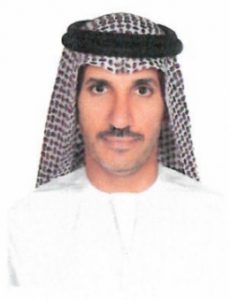 Dr. Mohamed Nasser Al Ahbabi, Director General of the UAE Space Agency, underlined the importance of satellite data analysis services related to earth observation, and the need to provide a uniform and systematic approach on efforts made by world countries to monitor the land, sea, and air.
Dr. Mohamed Nasser Al Ahbabi, Director General of the UAE Space Agency, underlined the importance of satellite data analysis services related to earth observation, and the need to provide a uniform and systematic approach on efforts made by world countries to monitor the land, sea, and air.
This came in a speech delivered by Al Ahbabi at the 5th International Conference on Earth Observation for Global Changes and the 7th International Conference on Geo-information Technologies for Natural Disaster Management organized by United Arab Emirates University (UAEU) in Al Ain, in collaboration with Waterloo Institute for Disaster Management held between 8-10 December.
Al Ahbabi said: “Many government and commercial institutions and entities in the state have expressed the need for such services, particularly since they have become a key and indispensable element in geographic information management systems. Space observation data derived from satellite systems are now used routinely, and their use is associated with other sources of data, including aerial photography, laser mapping systems for urban areas, monitoring weather on planet Earth for the production and construction of special and integrated temporal databases, as well as the provision of services that rely on a holistic analysis of these data. “
He added: “These services include risk, vulnerability, and climate change mapping, including the modeling and analysis of the effects of sea level rise as a result of global warming, and predicted poor visibility due to sand storms, cloudy weather, and heavy rains, in order to assess their impact on human life.”
Al Ahbabi said that due to the importance of the geographic information system (GSI) that relies on satellites in disaster management, a number of international initiatives have been launched to assist in the exchange of such data on a global level. He noted that with the establishment of the UAE Space Agency, the United Arab Emirates is now mobilizing efforts and building on participations in various international cooperative activities related to geographic information systems. The Agency as the authority to continue to show the capabilities and obligations of the State, so it would be an active member and contributor to various global activities, such as the “Spider” initiative sponsored by the United Nations, and any other initiatives that are launched to benefit and serve humanity.
The Agency will make use of the successful group of satellites operated by the UAE, including DubaiSat-1 and DubaiSat-2, which will be backed by a third highly advanced satellite, Khalifa Sat. These will provide services based on the systems and applications that contribute to urban planning; monitoring various environmental changes; assessing natural climatic factors, such as sand storms and fog; determining water quality in the region and monitoring the red tide; in addition to supporting aid missions and disaster relief. This will contribute to strengthening the global role and position of the State in this area because of the services that benefit society, the state, and humans.
Al Ahbabi said that it may be an appropriate time to assess the feasibility and benefits of establishing a joint and central database in the UAE to monitor the earth, which can be built based on satellites owned by the state and other commercially available data, thanks to existing space assets and other sources. Thus, this data can be made available to all government agencies in the state, which can enter data and access different layers of this information through a secure data portal.
Al Ahbabi noted that such a strategy has proven to be effective when it was approved by the government of Abu Dhabi through the establishment of the Abu Dhabi Systems & Information Centre (ADSIC) in the year 2009 to enable the provision of central services for the geographic information system, especially since such a move is in line with the e-government vision and its aim to make electronic services available for everyone in the public and private sectors.
It is noteworthy that the UAE will use aerial observation applications and technology via satellites in the development of its Mars Mission project, where the “Hope Probe” will be the first probe of its kind to study climate on Mars on an ongoing basis, and therefore will serve as the first real Martian aerial observatory.
More than 1,000 gigabytes of data on the red planet’s climate will be sent to a number of ground receiving stations scattered around the world, to be analyzed and shared free of charge with the scientific community including scientists, researchers, students, and academics interested in science related to Mars from around the world, in order to gain a deeper understanding of climate and planetary evolution within our solar system, paving the way for more accurate knowledge about the location of planet Earth in order to enrich human knowledge.












Add Comment